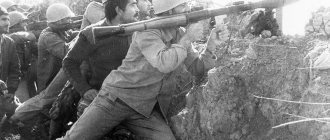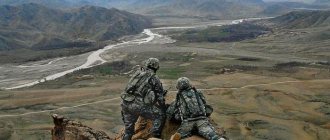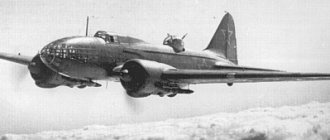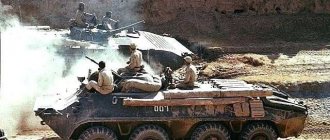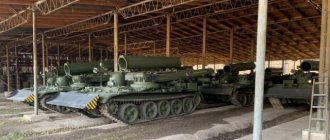New shell shocks, new corpses
The Pentagon officially reported 109 casualties. In a statement released Monday, Pentagon spokeswoman Alyssa Farah stressed that this is only “current data” and the number of casualties could rise again.
Earlier, the Pentagon explained the increase in the number of casualties by saying that “shell shock cannot always be determined immediately” - however, more than a month has passed since January 8, a black day for American troops in Iraq. Sources in Iran said 143 Americans were killed and more than 500 wounded.
IRAN MISSILE ATTACK TO USA HQ AIN AL ASSAD pic.twitter.com/9aY8X8Bq2i
— Reza (@Reza73173327) January 8, 2020
The Pentagon confirmed what became known shortly after the missile strike - the shell-shocked Americans (as well as, probably, the corpses of the dead) were already taken on special flights to Germany, Jordan and Rhodes on January 8th.
defense.gov/
Meanwhile, reports of the death of American troops continue to come from countries neighboring Iraq. After Private Antonio Moore died in a “vehicle accident” in Syria on January 24 (there is no other information about this incident other than Pentagon data), the American contingent in Afghanistan suffered the greatest losses. New casualties were announced on Sunday - two US military personnel died "from wounds received in combat operations."
The most serious incident was the death on January 28 of an American reconnaissance aircraft carrying “Ayatollah Mike” - CIA officer Michael D'Andrea , who was responsible for the operation to kill Iranian General Qassem Soleimani. Iranian sources said the shooting down of D'Andrea was part of Operation Revenge for the Martyr Soleimani - the plane was shot down by a MANPADS supplied to Afghanistan by the Islamic Revolutionary Guard Corps. According to unconfirmed reports, "hundreds of dead" were found at the crash site.
Pr Scr Telegram / @colonel_cassad
The very next day it became known about the crash of a UC-27B transport aircraft in the Iraqi province of Anbar - the type used by employees of the US Special Operations Command. The exact number of deaths remained unknown, and the Pentagon did not make any special statements on this matter.
Meanwhile, the number of casualties from the shelling of Ain al-Assad continued to grow.
Hiding losses is the Pentagon's operating principle
According to official data, about 16 thousand US military personnel have died since 2006. However, according to US rules, only a minority are considered “combat losses.” Less than a third (28%) of military deaths were attributed to combat casualties in 2022, according to Military Times. All other Americans killed in more than 70 countries around the world are considered "non-combat casualties." This practice makes it possible to hide the real number of casualties among American troops by manipulating data on the death of military personnel.
Federal News Agency /
For example, Private Antonio Moore died in the Syrian province of Deir ez-Zor. Despite the fact that he was part of the US occupation forces in Syria and died during a combat mission on the left bank of the Euphrates, his death does not qualify as a “combat loss” - after all, there was no battle, it was “just an accident.” The same applies to thousands of other US military personnel.
Evidence from US military campaigns in the Middle East since the terrorist attacks of September 11, 2001 suggests that in all of these conflicts the Pentagon has grossly understated the number of American casualties (as well as the number of civilian casualties).
The statistics that the Pentagon publishes are quite remarkable: the number of American military personnel killed in a “non-OCO accident” is 1.7 times higher than the number killed in combat! Moreover, the number of “non-OCO self-inflicted deaths” is 1.2 times higher than the number of soldiers killed in combat. And the number of military personnel who died from non-combat illness and injury (non-OCO illness/injury) is only slightly less than combat casualties - despite the fact that US military personnel have access to one of the best medical care systems in the world.
Pr Scr militarytimes.com /
Moreover, in statistics from 2006 to 2022, 458 US military personnel are listed as “non-OCO homicides,” 248 cases are considered “uncertain” and another 104 are “pending.”
April - June 1988
Operation Praying Mantis convinced the Iranian leadership of the pointlessness of continuing the war, and subsequent events pushed Iran and Iraq to conclude a peace treaty. After the naval battle with the American squadron, the Iranians lost hope for a fair and just solution to oil-related conflicts. The country was also demoralized by the fact that it found itself in the position of an outcast in the world community. Iraq, on the contrary, perked up, mobilized the economy and accepted the help of Iranian guerrillas from the organization OMIN (Organization of the Mujahideen of the Iranian People). Iraq has completely regained its territories. Despite this, the results of the Iraq war are devastating both for this country and for its enemy, Iran.
Iran, which could no longer count on help from the West and neighboring countries, had nothing to fight with - almost all air, land and sea military equipment was destroyed, and there was nowhere to get funds for its restoration or purchase. On July 17, 1988, Ayatollah Khomeini proposed peace to Saddam Hussein. This ended the Iran-Iraq war, but peace never came to the Persian Gulf. After the first war there was a short break, and then hostilities resumed.
Afghanistan
The methods used by the Pentagon to “dilute” combat losses were written by the Pakistani publication Frontier Post back in 2003. In the two years since the war began, the United States has lost more than 2,600 troops killed and several thousand wounded, senior military sources in Afghanistan said.
army.mil/US Army
In the West, coverage of military actions against the Islamic movement Taliban1 (banned in the Russian Federation) was conducted almost exclusively by American and British official sources, as well as the Qatari TV channel Al Jazeera - as a result, information about real losses never made it into the mainstream American media.
Frontier Post claims that NATO forces suffered their biggest losses in October 2001, when they began their military campaign and fought fierce battles for Mazar-i-Sharif, Kabul and Kunduz. The first loss was confirmed by the United States only after November 25 (a month and a half after the start of the operation in Afghanistan, and the officer died not during the fighting, but during the uprising of Taliban prisoners in the Qala-i-Jangi prison).
commons.wikimedia.org/isafmedia-Flickr/CC BY 2.0
The US later suffered major losses in March 2002 during Operation Anaconda in the mountains of Paktia province. The bodies of the dead were sent not to the USA, but to Germany, where for a long time they were stored in special morgues - the bodies of the dead were gradually transported to their homeland by several dozen people at a time. This was done in order to avoid mass protests in the United States due to huge losses.
Iraq
Federal News Agency /
The Pentagon hid and continues to hide the losses that the United States suffered during the war in Iraq - this became known only several years after it began. As a group of CBS News journalists found out, contrary to official US data, the number of US Army losses during the invasion of Iraq significantly exceeded 15 thousand people.
As it turned out, young Americans who allegedly served in Iraq and returned home to the States became victims of a real “suicide epidemic” - more than 6.2 thousand Iraq veterans allegedly committed suicide in 2005 alone. According to CBS News investigators, the killed Americans were fictitiously discharged from service, after which they allegedly committed suicide.
wikipedia.org/CC BY-SA 3.0
Already in April 2004, information was leaked to the press that the bodies of several thousand servicemen from the United States and Great Britain who died in Iraq and Afghanistan were located on the territory of Cyprus. The bodies of the military were kept in refrigerators on the territory of Cyprus controlled by American peacekeepers, and were gradually transported to the States through medical centers in Germany and the Middle East.
American invasion
Having not had time to properly recover from the first war, Iraq entered a new one. Now this is the US-Iraq war. Under the nominal pretext of eliminating chemical weapons and enterprises for their production, but in reality - to establish control over a country that owns oil resources, on March 20, 2003, coalition troops led by the US Army invaded Iraq.
The main ally of the United States was the British armed forces. At a meeting in the UN Security Council, Russia, China and France vetoed the use of force against Iraq, but their ultimatum was ignored.
Against the albeit large (about 1 million conscripts and career military) Iraqi army, including a little more than 5,000 units of military equipment, the coalition forces advanced an armada of military equipment and well-trained commandos. The 2003 Iraq War lasted only 21 days. The Iraqis fought fiercely for every inch of their land, but their army, which although outnumbered the army of the aggressor, was completely defeated. Cities were in ruins, the economy was completely undermined. Chaos and civil war began in the country.
General principles of concealing losses
Professor Badran, in his analysis of the war in Iraq, writes about the general principles of concealment of losses that the Pentagon uses: almost never information about the dead is reported immediately - as in the case of the missile attack on Ain al-Assad, only the “casualties” are reported and "wounded" as a result of an enemy attack.
Pr Scr youtube.com/
First of all, information about the death of American military personnel is hidden from their colleagues - those who were not directly present at the incident. Most Americans are not ready to deliberately suppress information about the death of their comrades in arms - so military intelligence gets down to business. The deceased's colleagues are informed that their comrade is in the hospital "in extremely serious condition", the secret service confiscates his personal file, and the soldiers are strictly forbidden to tell anything to the relatives of their comrade.
If the deceased serviceman is not a US citizen, he can be buried directly on the territory of a military base - a similar mass grave was found, in particular, at an evacuated US base near Baghdad.
flickr.com/US Department of Defense
The bodies of dead soldiers and officers - US citizens - are taken on an emergency flight to Germany, Qatar, or another country where there are US military bases. There, the corpses are frozen, which allows the body to be stored indefinitely. In cases where this is impossible for some reason, they tend to transfer the deceased to the category of “non-combat losses” - for example, the cause of death is declared to be death during fire training, a serious illness, or some “unusual cause” - for example, a sudden heart attack , says Badran.
Successes of the Iraqi army
Between February and July 1980, Iran violated the border of Iraq 224 times, carrying out fire strikes from the air, land and sea, but the Iran-Iraq War is officially considered to have begun on September 4, 1980, when the Iraqi army invaded Iran and occupied disputed territories in the Zein al-Kaws region. The units that crossed the Shatt al-Arab captured Khuzistan. The Iraqis then occupied Ahwaz and Dizful. Oil terminals on Khark Island and Abadan Khorramshahr were destroyed, causing major damage to Iran's economy. Iran soon paid for the bombing of Baghdad with the ruins of Tehran.
The offensive was decisive and rapid. The Iraqi army was moving towards Iran from three directions simultaneously. The main battles took place in the south. The main attacks on the capital were carried out from this side. It was to Saddam Hussein's advantage that Iran began aggression against Iraq at a time when its army, and most importantly, the command of its armed forces, were weakened as a result of the rotation undertaken after the revolution.
The Iraqi command planned to end the war by October 20, the Islamic holiday of Eid al-Adha. Initially, everything turned out as well as possible for Iraq: the superiority of forces was on its side - five Iraqi divisions were opposed by only one Iranian one, and they also relied on the factor of surprise. However, in one week, having traveled about 40 km deep into Iran, Saddam Hussein suspended the offensive and decided to move on to peace negotiations. This slowdown helped Iran consolidate and turn the tide of the war.


